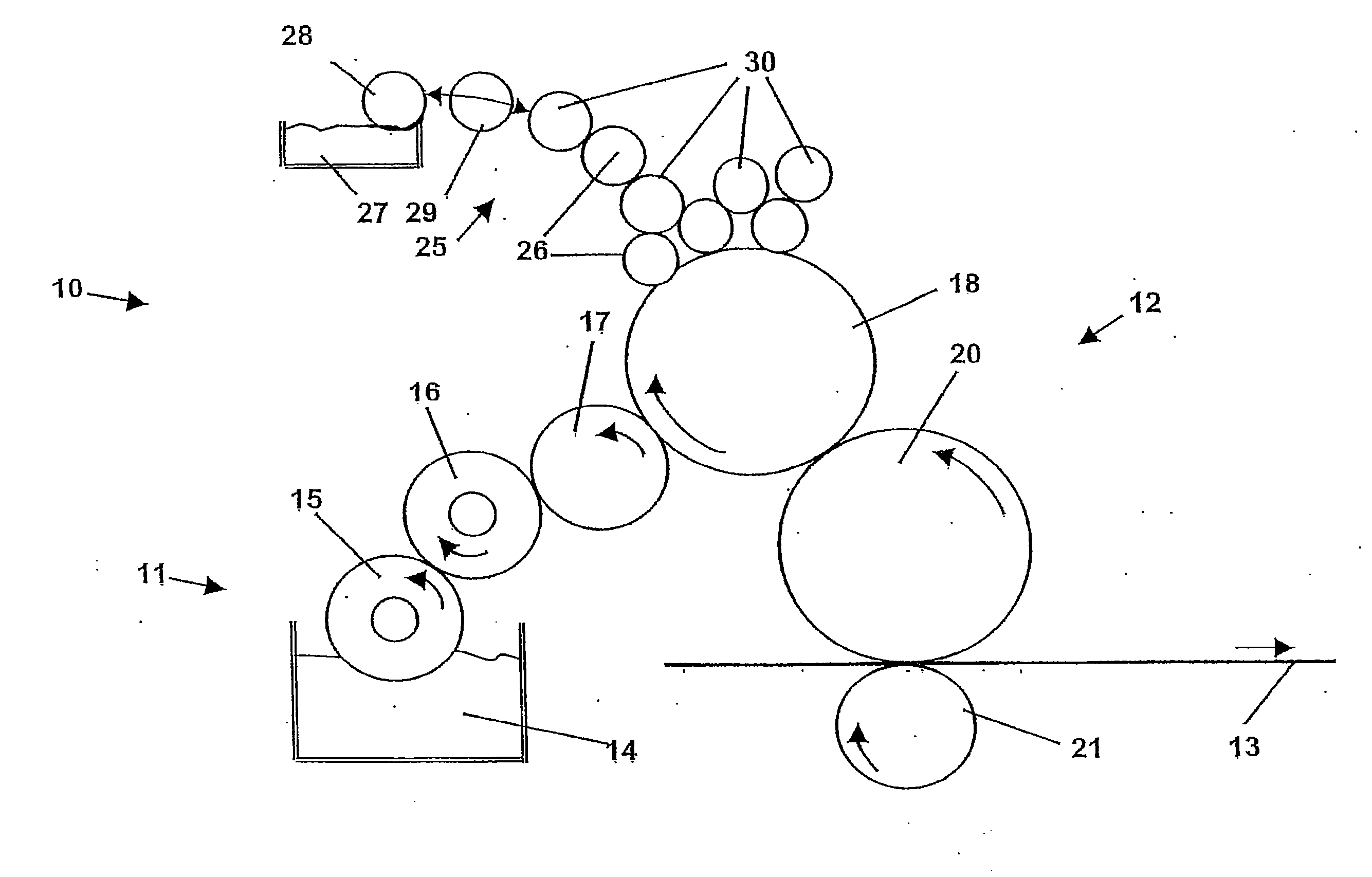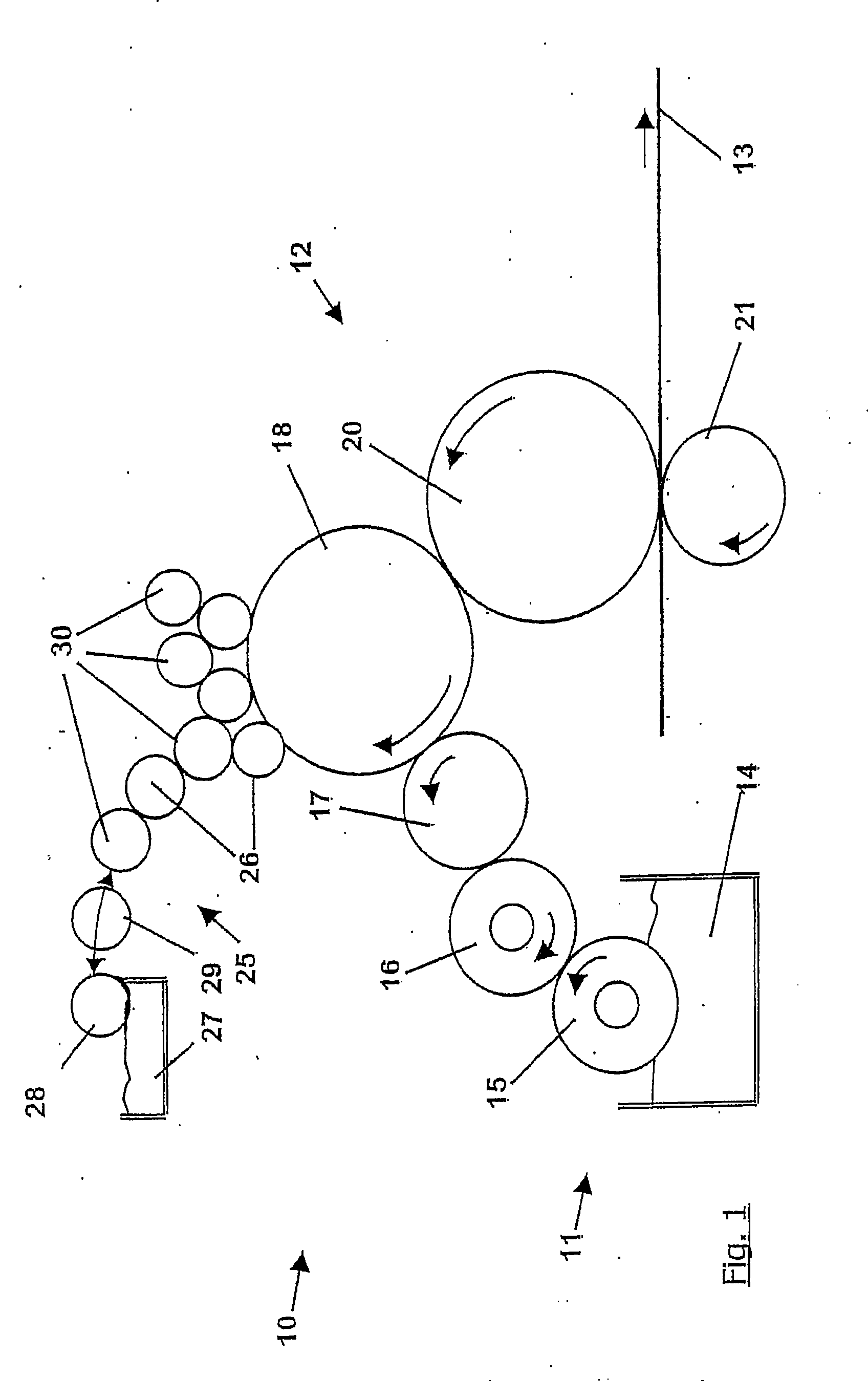Contact or transfer roller
a technology of contact or transfer roller, which is applied in the direction of printing presses, rotary presses, printing presses, etc., can solve the problems of high demands, inability to solve the above-mentioned problems, and inability to abrasion behavior and mechanical stability, etc., to achieve high surface tension, increase water balance and need, and low surface tension
- Summary
- Abstract
- Description
- Claims
- Application Information
AI Technical Summary
Benefits of technology
Problems solved by technology
Method used
Image
Examples
example 1
[0091]Example 1 relates to a first inventive roller cover having a surface roughness of the intact surface of 1.4 μm (Rz). A steel sheet surface serves as a substrate coated with fluorohydrocarbon resin, as the material of the roller cover.
PencilGFM evaluationhardnessVisual / Manual Observation of Scratchdepth [μm]4Bnot visiblenot measured3Bsupport point of pencil minimally visiblemeasurement not evaluable2Bvisible scratch,~1.3not palpableBvisible scratch,~1.8palpableHBvisible scratch,~2.5palpableFvisible scratch,~2.6palpable (top coat initially scratched)Hvisible scratch, palpable~2.25(punctiform destruction of the surface down to themetal)2Hvisible scratch, palpable~4.6(1 mm long destruction of the surface down to the metal)3H12 mm long destruction of the surface down to the~20.0primer layer, punctiform destruction of the surface downto the metal4H14 mm long destruction of the surface down to the~16.0primer layer, punctiform destruction of the surface downto the metal
example 2
[0092]Example 2 shows a determination of the scratch hardness according to Wolff-Willborn on a further embodiment. The surface roughness of the intact surface in this case was 5 μm (Rz). The substrate was a steel sheet coated with a fluorohydrocarbon resin (material of the roller cover). The thickness of the examined cover layer was 40 μm. Rz value of the intact surface: 4.95 μm.
PencilGFM evaluationhardnessVisual / Manual Observation of Scratchdepth [μm]2Binvisiblenot measuredBinvisiblenot measuredHBinvisiblemeasurement not evaluableFpunctiform destruction of the top coat down to the~40metalHpunctiform destruction of the top coat down to the~40metal2Hpunctiform destruction of the top coat down to the~35metal3Hpunctiform destruction~45(1.33 mm)of the top coat down to the metal and visiblescratch, not palpable4Hpunctiform destruction~49(1.14 mm)of the top coat down to the metal and visiblescratch, not palpable5Hdestruction (1.15 and 2.11 mm) of the top coat down to~36the metal6Hdestruct...
PUM
 Login to View More
Login to View More Abstract
Description
Claims
Application Information
 Login to View More
Login to View More - R&D
- Intellectual Property
- Life Sciences
- Materials
- Tech Scout
- Unparalleled Data Quality
- Higher Quality Content
- 60% Fewer Hallucinations
Browse by: Latest US Patents, China's latest patents, Technical Efficacy Thesaurus, Application Domain, Technology Topic, Popular Technical Reports.
© 2025 PatSnap. All rights reserved.Legal|Privacy policy|Modern Slavery Act Transparency Statement|Sitemap|About US| Contact US: help@patsnap.com


